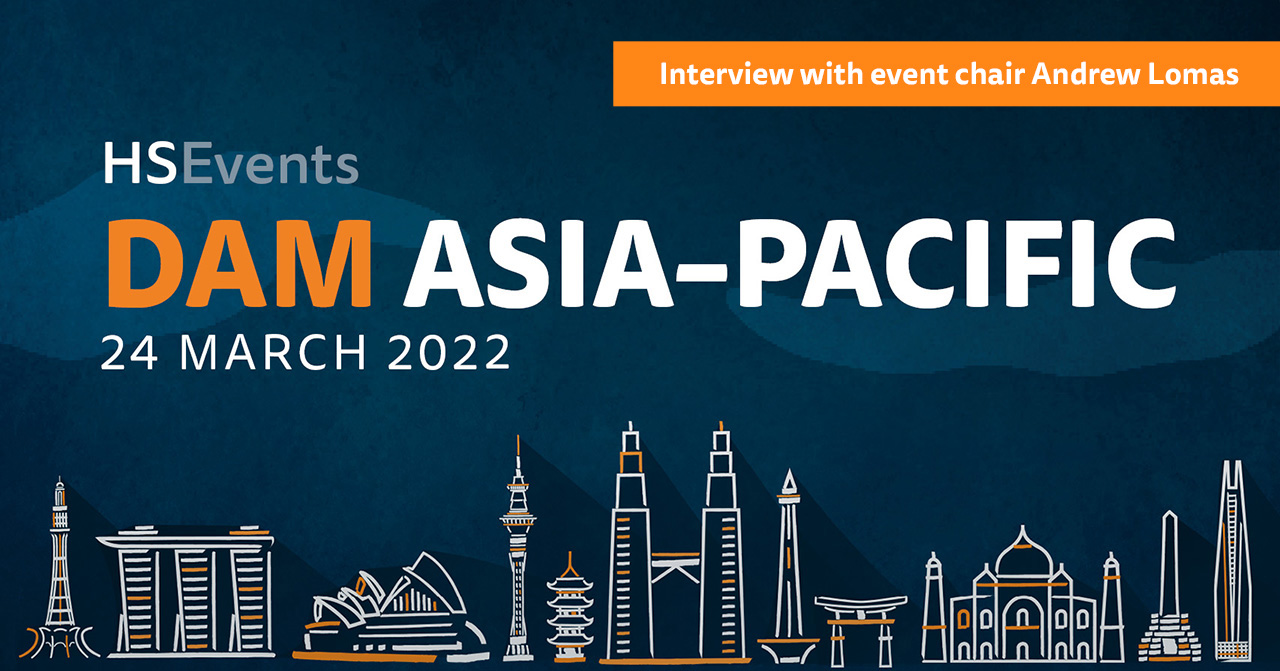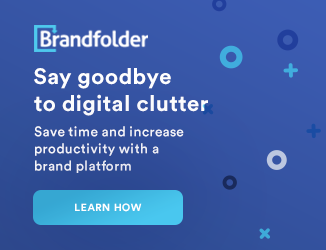I was recently announced as Chair of the DAM Asia-Pacific 2022 online event for the second consecutive year.
In the lead-up to the event, I sat down with Henry Stewart's Head of Marketing, Milly Louch, to discuss all things Digital Asset Management (DAM).
During the conversation, we discussed the changes I have seen in the market during 2021 and what's next for effective digital asset management and specifically how DAM’s will underpin not only marketing and communications but many more business functions.
Below is a summary of that conversation.
What changes in the world of content management have stood out to you most over the last 24 months?
There are four main topics I believe have impacted the content and DAM ecosystem.
- Content management is a multi-discipline, multi-vendor end-to-end process. A single product or partner cannot solve all workflow issues for content creators and brand managers.
- The wish to connect DAM to other business systems to augment their functionality is becoming common and more widely accepted across industries to support business functions such as CRM and product management.
- Fewer users leverage traditional DAM interfaces and rely more on panels inside applications or pass-through capabilities from tools like Salesforce Marketing Cloud.
- We have seen project management and collaboration vendors buying DAM companies, such as SmartSheets buying Brandfolder, Aquia buying Widen, and Lytho buying InMotion Now. Traditional workplace vendors have started buying work collaboration companies, such as the case of Citrix purchasing Wrike.
How has the increase in staff scarcity and remote work operations impacted Australian business regarding content management?
Many businesses reported impacts from the lack of a talent pool, especially when Australia’s borders closed for nearly two years because some companies previously relied on people coming from overseas to fill gaps in the Australian talent pool.
The need to do more with less has made automation and integration a significant focus, and the time spent working from home has caused many of us to rethink work processes, tools and steps. Unfortunately, content went a bit rogue in our first lockdown. We just had to adapt quickly. After our second major lockdown, organisations started revisiting security and compliance to ensure their tools and processes deliver scalability and transparency.
We have well and truly shattered the barriers of change management. Acceptance of change means better acceptance of more forward-thinking ideas. We are coming through COVID with a vision that aligns with the adage ‘work smarter, not harder.’
Would you say COVID and its impacts have increased or decreased the pace of content management technology being adopted and leveraged out in the market?
From our perspective here in Australia, we have seen a rapid increase in the number of organisations reviewing the current technology and looking to adopt and simplify the process through integration. Many brands have taken ownership of their content repository rather than relying on agencies. This approach helps them establish omnichannel content platforms to hook into current and new offerings for their customers.
Are you seeing more industries looking at DAM and content management technology in the last 24 months?
Definitely. As I said before, traditional businesses and the industry sectors purchasing content management solutions have broadened. In addition to retail and the traditional product-centric industries, areas of industry like manufacturing, construction and finance have expanded their content toolkit to serve rich and engaging customer experiences. Businesses are taking more ownership of their content, which means the DAM supply chain takes place where primary content producers use DAM to underpin their usage of photography, videography, and branding. They then push the approved content into the brand’s core DAM platform, which the digital and social teams enrich.
We also see content workflows supporting call centres and customer service teams where visuals and text combine to improve customer experience with product usage, sales support inquiries, and maintenance and self-service tools and applications. Consumers are so used to rich, engaging content that they expect it in the lifecycle of engagement with any brand, whether it be entertainment, education, a charity, or their favourite retailer.
What do you think are the key focus points for organisations in 2022 to consider when it comes to their content?
- Build modular content not specific to a channel. Plan and design primary content in an omnichannel sense and link rich assets to the text with related assets that support it.
- Reuse, don't recreate. If you store content assets properly with correct rights, you can save a lot of time and money if you can find and repurpose them.
- Minimise the number of interfaces people use with integration to feed content through its lifecycle. This reduces duplication and ensures you leverage the right content in the right channel.
- Consolidate capabilities in the workflow around roles and business functions. Pick tools that do the job best and use integration to compose a solution. Not one tool can do everything but don't use twenty if five can do the job.
- Integrate and do more automation. Don't be a monkey hammering a nail because the process is familiar and obvious.
- Reconsider your digital front-facing interface development to leverage CDN technologies rather than embed content into digital destinations.
- Nurture your content. Put a passionate owner in charge of the content ecosystem and challenge yourself in new ways of getting value out of the library you have.
What key themes will be explored by speakers at DAM Asia-Pacific 2022?
The 2022 DAM Asia-Pacific event brings together a broad range of speakers from the local APAC region who will share how DAM supports many different use cases across a wide range of industries and organisations.
The key themes covered include historic preservation of video footage with the history of the Australian Football League (AFL) and localisation of brand and consumer information by Les Mills for its worldwide audience of customers.
In addition, the challenge faced by many in selecting a new scalable DAM platform and the operational transformation required for establishing a modern and reliable platform for thousands of users around the globe. Doing so is no easy feat and required CX level support for World Vision, but it is delivering great rewards and uptake.
But DAM, of course, supports the product lifecycle that we interact with every day through product selection and purchasing. Wizard Pharmacy Group will discuss the integration of DAM into their supplier ingest process, normalising the rich assets and content and using DAM APIs to publish and update the asset content into their many channels for promotion, purchase and loyalty programs.
L’Oreal will discuss the widespread need to integrate Product Information Management (PIM) tools and DAM to holistically manage their business' critical e-commerce and e-tailing in the same product theme.
Last but not least, we have two panels for you to participate in this year. One focused on GLAM (Galleries, Libraries, Archives and Museums) and how they must move to embrace DAM as part of their core toolkits and frameworks for digital preservation and reference. The other is the crucial and fundamental aspect of what makes DAM a powerful tool - metadata. Loved by the searcher and often overlooked by the ingester, we cover design specifics, controlled vocabulary, governance, and cultural and ethical differences.
What are the most important takeaways from this event?
This year, we have 10+ live sessions covering specific learnings, including digitisation, leveraging DAM on a global scale, using DAM as a growth tool, DAM and MarTech, change management, integrations, and more.
Despite this being an online event, live networking is one of the main benefits. Detailed, real-life case studies will highlight what is happening in the DAM world across the APAC region, which has not been done at this event before.
The event format allows for maximum learning and getting first-hand best practice examples from people who have done it, opportunities to ask questions, and the ability to share your thoughts and experiences through the virtual round table. You’ll meet DAMsters from all over the region who have similar roles in many different organisations – time to share, learn, debate, and exchange the challenges (and enormous opportunities) in the world of DAM.
Finally, as the DAM Asia-Pacific Conference Chair, I learned at last year's event that DAM had matured a long way and many organisations were on their third iteration of DAM to support marketing and product management processes. What made the difference was having their modern DAM platforms tightly integrated into business systems at the core of the technical stack. Throughout the year and at this event, we will see more examples of DAM at the centre of the operations function, adopted by global companies based in the APAC region. We will explore how DAM supports the challenges of regional and localised content and products for their organisations and customers.
Also, for those still using DAM in a pure-play function, such as preservation, extending these platforms to be more intelligent through AI and ML can reduce the human effort and increase accuracy when managing complex taxonomies that support the librarian function. This makes the assets more accessible and allows the history and information to be consumed and leveraged for education.
I'm excited by this year's agenda as it highlights the broad use of DAM across many industry sectors. It emphasises the outcomes and benefits of adopting and transforming processes to enhance people's day to day experiences - both internally within an organisation and by their customers or suppliers.



 Previous
Previous



